Type 81 assault rifle
The Type 81 (Chinese: 81式自动步枪; literally; "Type 81 Automatic Rifle") is a Chinese-designed second-generation, selective-fire, gas-operated 7.62×39mm rifle (based on Kalashnikov and SKS actions) adopted by the Chinese People's Liberation Army (PLA) and has been in service since the mid-1980s.
| Type 81 | |
|---|---|
 Type 81-1 (top) and Type 81 (bottom) | |
| Type | Assault rifle Battle rifle (CS/LR14 export model) Semi-automatic rifle (NR-81S and other civilian export models) |
| Place of origin | China |
| Service history | |
| In service | 1983–present |
| Used by | See Users |
| Wars | Sino-Vietnamese conflicts Cambodian–Vietnamese War Soviet War in Afghanistan Sri Lankan Civil War Lord's Resistance Army insurgency Kargil war Boko Haram insurgency Persian Gulf War Baren Township riot Croatian War of Independence Bosnian War Kosovo War War in Afghanistan Internal conflict in Burma Iraq War Syrian Civil War Internal conflict in Myanmar |
| Production history | |
| Designer | Norinco |
| Designed | 1971-1981 |
| Manufacturer | Norinco |
| Produced | 1983 |
| No. built | ~400,000 (Type 81)[1] |
| Variants | Type 81-1 Type 81 light machine gun Type-81S Type 87 Type 87-1 BD-08 BD-08mk2 BD-08LMG |
| Specifications | |
| Mass | 3.4 kg (7.50 lb) (empty) 4.5 kg (9.92 lb) (loaded) (CS/LR14)[2] |
| Length | 955 mm (37.6 in) 785 mm (30.9 in) (butt folded) (CS/LR14)[2] 1,010 mm (40 in) (butt extended) (CS/LR14)[2] |
| Barrel length | 445 mm (17.5 in) |
| Cartridge | 7.62×39mm (Type 81) 5.8×42mm DBP87 (Type 87) 7.62×51mm (CS/LR14) |
| Action | Short stroke gas piston, rotating bolt |
| Rate of fire | Approx. 700–720 rounds/min |
| Muzzle velocity | 750 m/s (2,461 ft/s) 760 metres per second (2,493 feet per second) (CS/LR14)[2] |
| Effective firing range | 400+ meter 400-500 meter (CS/LR14) |
| Maximum firing range | 2000+ meter |
| Feed system | 30-round detachable box magazine (20 rounds for CS/LR14), 75-round detachable drum magazine |
| Sights | Adjustable iron sights |
History
The PLA's first attempt to replace their aging SKS and Type 56 assault rifle (a Chinese license produced AK-47) was the Type 63 assault rifle. This weapon, however, ended in failure due to a variety of issues resulting in a switch back to the weapons it intended to replace. The beginning of the Sino-Vietnamese border conflicts however, showed the PLA that their SKS and Type 56s were not as effective as they thought, causing their small arms development program to spring back to life.
The weapon was introduced into PLA service in 1981 but did not become widely distributed until the late 1980s. It replaced the SKS,[3] the Type 56 assault rifle and even the RPD machine gun (LMG version), succeeding where the Type 63 failed. Its first combat use came during the latter part of the Sino-Vietnamese border conflicts of the mid-1980s. The PLA has replaced most of its Type-81s with the Type 95 or Type 03 series of weapons, though it is still in service in the reserves and armed police. An improved version is also used by the Bangladesh Army under the designation BD-08.[4]
Design
The Type 81 incorporates elements of the Dragunov, SKS, and AK series rifles. The design criteria it met included accuracy of 1.78 inch R50, that is 50% of the hits within a 1.78 inch diameter at 100 meters; improved controllability in full-automatic; the same reliability of the AK but a longer service life to approximately 20,000 rounds; and able to use existing AK and SKS production tooling at the time.[5]
The rifle retains the general layout of the Chinese Type 56 assault rifle, but it has a SKS-like short-stroke gas-piston design and other improvements to reduce recoil and muzzle jump, giving better firing accuracy. Notable physical differences from the Type 56 assault rifle include the stock of the rifle, the length of the action, bayonet, and the positioning of the front sight.[6]
The most easily distinguishable feature of the Type 81 is the more exposed muzzle part of the barrel. The front sight has been moved back as a modification to be able to fire 22mm rifle grenades, which are slid over the unobstructed barrel muzzle now formed into a spigot-type rifle grenade launcher.[6]
There is a significant gap between the trigger guard and the magazine on Type 81 rifles, while on the Type 56 rifle series the magazine is adjacent to the front of the trigger guard.
The non-detachable swing-out spike-shaped bayonet of the Type 56 rifle was also replaced on Type 81 rifles with the detachable Type 81 knife-bayonet.[7]
Like its predecessors, the Type 81 is a series of weapons. The Type 81 (fixed stock) and Type 81-1 (folding stock) are 7.62×39mm caliber assault rifles with 30-round magazines, and the heavier Type 81 light machine gun (LMG) fitted with a 75-round drum magazine is used in the squad automatic weapon (SAW) role.[6] Its sight remains at the front of the LMG barrel.
The Type 81 can be fitted with a Picatinny rail, bipod, foregrip, and flashlight.[8]
Variants


- Type 81 7.62×39mm rifle with a fixed wooden buttstock. 400,000 were produced before it was replaced by the Type 81-1.[1]
- Type 81-1 7.62×39mm rifle with a foldable buttstock. Originally intended for paratrooper use, the Type 81-1 replaced the Type 81 with its fixed wooden buttstock as the standard issue rifle for the PLA.[1]
- Type 81 LMG 7.62×39mm squad machine gun[1]
- Type 81 MGS Semi-automatic only version of the Type 81 LMG.
- Type 81S Early semi-automatic only model intended for the U.S. market. Only 20 were imported in January 1989 before further importation was blocked by executive order.
- EM356 5.56×45mm variant of the Type 81S, intended for the U.S. market. Only 3 Tool room prototypes were completed and imported for the 1989 SHOT show before importation was banned along with the Type 81S by executive order. No magazines were ever made for them so modified 5.56×45mm AK magazines must be used instead.
- T81SA Semi-automatic variant in 7.62×39mm.[9]
- T81-1SA Same as above, but with folding buttstock.
- Type 87-1 5.8×42mm experimental rifle, used to develop and test 5.8×42mm DBP87 cartridge for the QBZ-95 rifle
- Type 87 Served as a development platform for the next generation of PLA small arms, being used as a test-bed for the then new 5.8×42mm DBP87 ammunition. It never went into full-scale production but has been in service with PLA special forces.[1]
- Type 81 Tactical Tactical variant used by the PAP
- CS/LR14 7.62×51mm battle rifle. Newest tactical upgrade with modifications, such as tactical rails, foregrip, additional mountings, etc.
- NAR-10 Tactical variant made for export.
- NR-81S semi-automatic made primarily for the European and Canadian markets.
- Type 81A Upgraded variant with new stock and Picatinny rails shown at the 2018 Zhuhai Airshow.[10]
Foreign variants
_(cropped).jpg.webp)
- BD-08:Both assault rifle & light machine gun variant made under licence by the Bangladesh Ordnance Factories from 2008. BOF is producing more than 10,000 BD-08 rifles per Year.[4] It is marketed to have less recoil and "jump", improving on accuracy.[11] Standard service rifle of Bangladesh Army.[12]
 Kachin Independence Army produced Type 81 variants dubbed the M23, comes with updated polymer furniture with a Sun Motif. Not much is known about their manufacturing details due to their clandestine origins, possibly unofficially licensed built with PRC tooling as proxy military aid delivered through Bangladesh.[13]
Kachin Independence Army produced Type 81 variants dubbed the M23, comes with updated polymer furniture with a Sun Motif. Not much is known about their manufacturing details due to their clandestine origins, possibly unofficially licensed built with PRC tooling as proxy military aid delivered through Bangladesh.[13]- Kachin K09: Comes with black/plum polymer furniture.
- Kachin K010: Comes with green polymer furniture.
- Kachin K011: Dedicated indigenous 45mm rifle grenade launcher variant.
Users
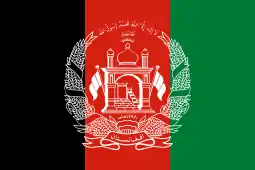 Afghanistan
Afghanistan Algeria[14][15]
Algeria[14][15]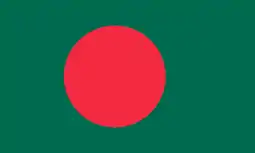 Bangladesh: Made under license by the Bangladesh Ordnance Factories as BD-08 Assault Rifle[16][14][17]
Bangladesh: Made under license by the Bangladesh Ordnance Factories as BD-08 Assault Rifle[16][14][17]
.jpg.webp)
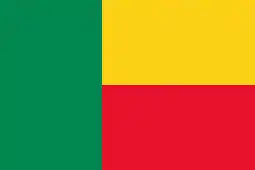 Benin: Used by Beninese peacekeepers in northern Mali.
Benin: Used by Beninese peacekeepers in northern Mali. Cambodia Used by the Royal Cambodian Army.[18]
Cambodia Used by the Royal Cambodian Army.[18] China: The Type 81 is still used by B-class units.[19]
China: The Type 81 is still used by B-class units.[19]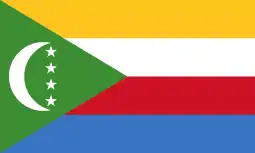 Comoros: Used by the Military of the Comoros.[20]
Comoros: Used by the Military of the Comoros.[20] Djibouti[14]
Djibouti[14]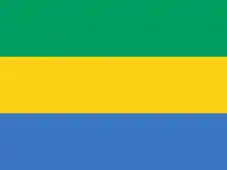 Gabon[21]
Gabon[21]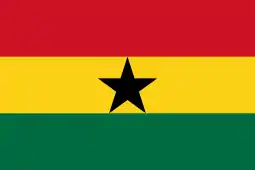 Ghana[22]
Ghana[22]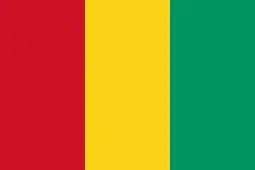 Guinea: Used by the Guinean Army and Navy[23][24]
Guinea: Used by the Guinean Army and Navy[23][24] Iraq: Used by Iraqi Police.[25][26][27]
Iraq: Used by Iraqi Police.[25][26][27] Ivory Coast[28][29]
Ivory Coast[28][29]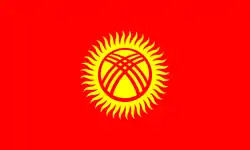 Kyrgyzstan[30]
Kyrgyzstan[30] Laos
Laos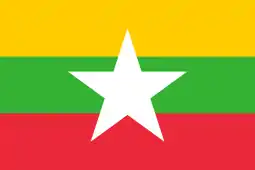 Myanmar[31]
Myanmar[31]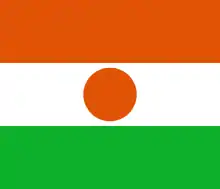 Niger[28] - Niger Armed Forces also use Type 81 machine guns.[32]
Niger[28] - Niger Armed Forces also use Type 81 machine guns.[32] Nigeria: Produced under license by the Defence Industries Corporation of Nigeria[14][33]
Nigeria: Produced under license by the Defence Industries Corporation of Nigeria[14][33] Pakistan[27]
Pakistan[27]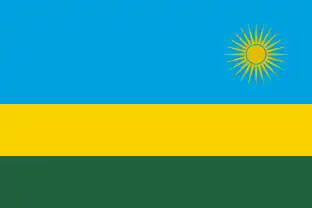 Rwanda: Used by Rwandan United Nations Police in the Central African Republic.
Rwanda: Used by Rwandan United Nations Police in the Central African Republic.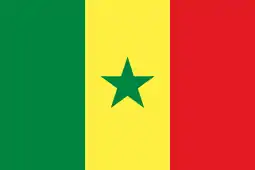 Senegal
Senegal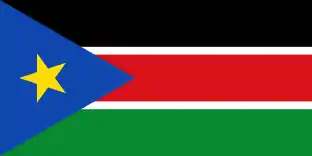 South Sudan
South Sudan Sri Lanka[34][35]
Sri Lanka[34][35] Sudan[36]
Sudan[36] Syria: seen in used by Syrian Arab Army during Syrian Civil War
Syria: seen in used by Syrian Arab Army during Syrian Civil War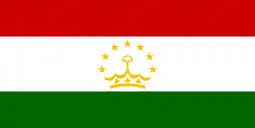 Tajikistan: Equipped with Type 81s since 2014.[37][26]
Tajikistan: Equipped with Type 81s since 2014.[37][26]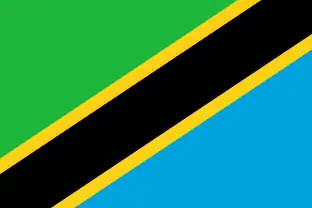 Tanzania[14]
Tanzania[14]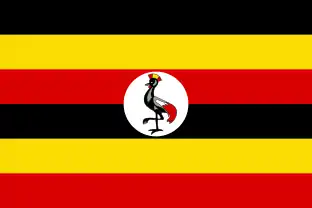 Uganda[38]
Uganda[38]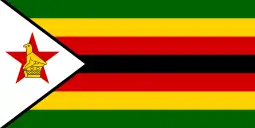 Zimbabwe: Type 81s are used by Zimbabwean military police officers.
Zimbabwe: Type 81s are used by Zimbabwean military police officers.
Non-state actors

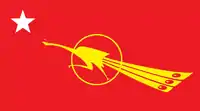 All Burma Students' Democratic Front
All Burma Students' Democratic Front Arakan Army
Arakan Army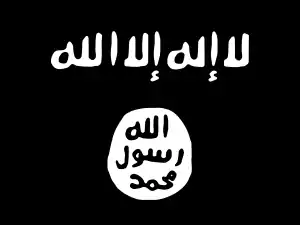 Islamic State of Iraq and the Levant[39][40]
Islamic State of Iraq and the Levant[39][40]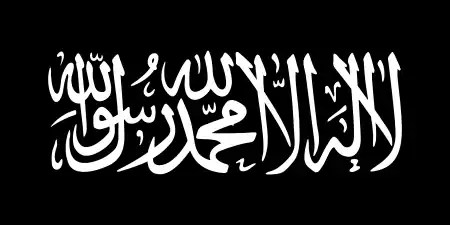 al-Qaeda
al-Qaeda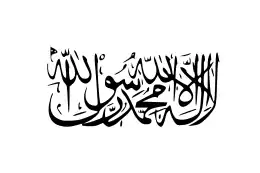 Taliban
Taliban Pakistan Taliban
Pakistan Taliban Kachin Independence Army[26][41]
Kachin Independence Army[26][41]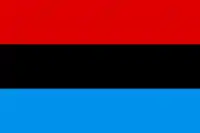 Lord's Resistance Army[38]
Lord's Resistance Army[38]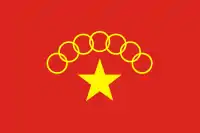 Myanmar National Democratic Alliance Army
Myanmar National Democratic Alliance Army New People's Army
New People's Army 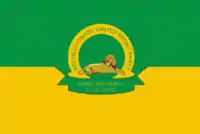 Revolutionary United Front
Revolutionary United Front Ta'ang National Liberation Army
Ta'ang National Liberation Army Tamil Tigers[23][42]
Tamil Tigers[23][42] United Liberation Front of Assam[43][44][45][46]
United Liberation Front of Assam[43][44][45][46] United National Liberation Front[47]
United National Liberation Front[47]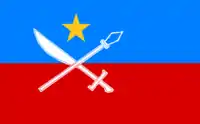 United Wa State Army
United Wa State Army
References
- Miller, David (2003). The illustrated directory of twentieth century guns. Zenith Imprint. pp. 278–279. ISBN 978-0-7603-1560-6.
- "Modern Firearms - NORINCO NAR-10 / CS/LR-14 automatic rifle (China)". Archived from the original on 1 September 2016. Retrieved 20 September 2016.
- The SKS Is the Cockroach of Weapons-You just can’t kill Sergei Simonov’s old, reliable, semi-automatic carbine
- "Small Arms Factory". Bangladesh Ordinance Factory. Retrieved 1 November 2020.
- "Archived copy" (PDF). Archived (PDF) from the original on 22 January 2016. Retrieved 17 August 2017.CS1 maint: archived copy as title (link)
- Cutshaw, Charles Q. (28 February 2011). Tactical Small Arms of the 21st Century: A Complete Guide to Small Arms From Around the World. Iola, Wisconsin: Gun Digest Books. pp. 192–193. ISBN 978-1-4402-2709-7. Archived from the original on 22 January 2014. Retrieved 27 July 2013.
- "Archived copy". Archived from the original on 3 August 2018. Retrieved 3 August 2018.CS1 maint: archived copy as title (link)
- Johnson, Steve (25 July 2012). "Chinese People's Armed Police Tacti-cool Type 81 Upgrade". The Firearm Blog. Archived from the original on 27 August 2012. Retrieved 11 April 2016.
- "EMEI/7.62mm Semi-Automatic Rifle Model T81SA". Archived from the original on 19 September 2016. Retrieved 9 July 2016.
- https://i.imgur.com/OHXNBso.jpg
- "Archived copy". Archived from the original on 6 April 2012. Retrieved 30 July 2018.CS1 maint: archived copy as title (link)
- "Bangladeshi Soldiers Are Issued A Unique Assault Rifle". 21st Century Asian Arms Race. Retrieved 28 July 2020.
- http://www.wanhuajing.com/d310053
- "Weapon". Weaponsystems.net. Archived from the original on 12 September 2014. Retrieved 11 April 2016.
- 360doc (29 September 2015). "撒哈拉那畔的兄弟:中阿军事合作的今与昔". 360doc.com. Archived from the original on 2 February 2017. Retrieved 24 January 2017.
- "China and Russia dominate Bangladesh arms imports in 2015/16 - Bangladesh Military Forces". BDMilitary.com. Retrieved 11 April 2016.
- 21st Century Asian Arms Race (1 March 2018). "Bangladeshi Soldiers Are Issued A Unique Assault Rifle". 21st Century Asian Arms Race. Archived from the original on 12 June 2018. Retrieved 12 June 2018.
- Type 81-1: fast assembly & disassembly | Cambodian Army training academy url=https://www.youtube.com/watch?v=I6pk4E-WB-A
- Lai, Benjamin (20 November 2012). The Chinese People's Liberation Army since 1949: Ground Forces. Elite 194. p. 62. ISBN 9781780960562. Archived from the original on 3 September 2018. Retrieved 2 September 2018.
- tiexue.net. "原创]久经考验的好枪!81式枪族在海外[已拜读". tiexue.net. Archived from the original on 20 October 2016. Retrieved 19 October 2016.
- Cpl. Alexander Mitchell (24 November 2016). "Gabon, U.S. train to fight illicit activity". Defande Video Imagery Distribution System. Archived from the original on 2 February 2017. Retrieved 27 January 2017.
- News Ghana (8 May 2016). "Ghana Armed Forces Hold Annual Open Day". newsghana.com.gh. Archived from the original on 6 June 2016. Retrieved 14 June 2017.
- "81式枪族". firearmsworld.net. 4 November 2005. Archived from the original on 23 October 2016. Retrieved 19 October 2016.
- US Army Africa (20 February 2014). "USARAF conducts training in Guinea". US Army Africa. Retrieved 21 June 2017.
- eastday.com (26 April 2016). "81式自动步枪的同门兄弟——1981年式7.62毫米班用机枪". eastday.com. Archived from the original on 20 October 2016. Retrieved 19 October 2016.
- V, Miles (28 February 2017). "Chinese Type 81 in Baghdad". The Firearm Blog. Archived from the original on 12 June 2018. Retrieved 12 June 2018.
- https://bbs.tiexue.net/post_4874304_1.html
- Bonn International Center for Conversion; Bundeswehr Verification Center. "Type 81". SALW Guide: Global distribution and visual identification. Archived from the original on 31 August 2018. Retrieved 31 August 2018.
- Anders, Holger (June 2014). Identifier les sources d'approvisionnement: Les munitions de petit calibre en Côte d'Ivoire (PDF) (in French). Small Arms Survey and United Nations Operation in Côte d'Ivoire. p. 15. ISBN 978-2-940-548-05-7. Archived (PDF) from the original on 9 October 2018. Retrieved 5 September 2018.
- "永远的81杠! 这是中国口碑最好的步枪美军抢着用黑叔叔都说好". eastday.com. Archived from the original on 20 October 2016. Retrieved 19 October 2016.
- Jones, Richard D. Jane's Infantry Weapons 2009/2010. Jane's Information Group; 35th edition (27 January 2009). ISBN 978-0-7106-2869-5.
- Savannah de Tessières (January 2018). At the Crossroads of Sahelian Conflicts: Insecurity, Terrorism, and Arms Trafficking in Niger (PDF) (Report). Small Arms Survey. p. 55. ISBN 978-2-940548-48-4. Archived (PDF) from the original on 12 June 2018. Retrieved 5 June 2018.
- Okoroafor, Cynthia (27 August 2015). "You probably didn't know that Nigeria already manufactures these weapons". Ventures. Archived from the original on 2 February 2017. Retrieved 24 January 2017.
- "Type 81 Assault Rifle". Military-Today.com. Archived from the original on 18 October 2014. Retrieved 11 April 2016.
- Moss, Matthew (25 April 2017). "China Spent Decades Trying to Build a Better AK-47". War is Boring. Archived from the original on 12 June 2018. Retrieved 12 June 2018.
- Yan, Timothy G. (24 March 2014). "Sudanese Future Soldier System". The Firearm Blog. Archived from the original on 14 July 2014. Retrieved 11 April 2016.
- "Why Is The Tajikistan Army Using Chinese-made Weapons? | 21st Century Asian Arms Race". Archived from the original on 29 May 2016. Retrieved 11 July 2016.
- Small Arms Survey (2006). "Fuelling Fear: The Lord's Resistance Army and Small Arms" (PDF). Small Arms Survey 2006: Unfinished Business. Oxford University Press. p. 283. ISBN 978-0-19-929848-8. Archived from the original on 30 August 2018. Retrieved 29 August 2018.
- Conflict Armament Research. "Weapons of the Islamic State". conflictarm.com. Archived from the original on 21 January 2018. Retrieved 9 January 2018.
- Miles V. (19 April 2018). "Chinese Type 81 LMGs Found with Amphetamine Filled Packets in Mosul". The Firearms Blog. Archived from the original on 12 June 2018. Retrieved 12 June 2018.
- Miles V. (13 January 2013). "Mystery rifle grenade launcher in Burma". The Firearms Blog. Archived from the original on 12 June 2018. Retrieved 12 June 2018.
- https://www.scribd.com/document/102984735/Dossier-on-LTTE-Weapons
- Times of India (6 December 2016). "Assam: Ulfa-I getting stronger by the day; 21 youths including a woman join in as cadres". thenortheasttoday.com. The Northeast Today. Archived from the original on 29 May 2017. Retrieved 6 June 2018.
- Dhruba Jyoti Deka (13 March 2013). "Bias source, Media Ethics and the last poem of Jahnabi". timesofassam.com. Times of Assam. Archived from the original on 20 June 2013. Retrieved 6 June 2018.
- "ULFA-I cadre Surrenders at Tinisukia". time8.in. Time 8. 12 October 2017. Archived from the original on 18 February 2018. Retrieved 6 June 2018.
- K Anurag in Guwahati (24 September 2013). "ULFA ultra killed in encounter, huge cache of arms recovered". rediff.com. Rediff News. Archived from the original on 26 September 2013. Retrieved 6 June 2018.
- security-risks.com (27 April 2015). "'United National Liberation Front of West South East Asia' Formed". kanglaonline.com. Kangla Online. Archived from the original on 28 April 2015. Retrieved 6 June 2018.